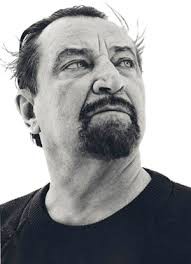
Maurice Béjart
1927-2007 FR, Marseille
Classical
A.k.a. Maurice-Jean Berger
Maurice Béjart, pseudonym of Maurice-Jean Berger (born January 1, 1927, Marseille, France - died November 22, 2007, Lausanne, Switzerland), French-born dancer, choreographer, and opera director known for combining classic ballet and modern dance with jazz, acrobatics, and musique concrète. One of the most influential and controversial European choreographers of the second half of the 20th century, Maurice Béjart was an unashamed populist, attracting huge, mainly young, audiences for his ballets. Although he was often discussed as if he was a modern-dance choreographer, his dancers were classically trained and his ballets were founded on classical technique. His large-scale works especially were greeted with almost hysterical enthusiasm in countries all around the world, although most critics in Britain and the United States received them with almost equal opprobrium, disliking their mixture of mysticism and popular culture. After studies in Paris (having adopted the stage name Maurice Béjart – a homage to Molière's wife the actress Armande Béjart) Béjart toured with the Ballets de Paris de Roland Petit (1947–49), the International Ballet (1949–50), and the Royal Swedish Ballet (1951–52). In 1954 he founded Les Ballets de l’Étoile (later Ballet Théâtre de Maurice Béjart), for which he choreographed his masterwork, Symphonie pour un homme seul. His other ballets include Voilà l’homme, Promethée, and Sonate à trois. In 1960, following his successful ballet version of Igor Stravinsky’s masterpiece Le Sacre du printemps (1959), he became director of ballet at Brussels’ Théâtre Royal de la Monnaie. The same year he became artistic director of the Ballet du XXe Siècle (Ballet of the Twentieth Century), which became one of the foremost dance companies in the world. In 1987 the troupe moved to Lausanne, Switzerland, and was renamed Béjart Ballet Lausanne. Béjart’s productions with the Twentieth Century troupe were notable for their flamboyant theatricality and their innovative reworking of traditional music and dance materials, often in an unusual and controversial fashion. In 1961 Béjart launched his career as an opera director with Offenbach’s Tales of Hoffmann, followed in 1964 by Berlioz’s Damnation of Faust. His original works include a musical, The Green Queen (1963), and such ballets as Bolero (1960), Ninth Symphony (1964), Firebird (1970), Nijinsky, Clown of God (1971), and Notre Faust (1975).
Genres
Discography
| Title | Artist | Year | Type |
|---|---|---|---|
| The Ninth Symphony On Schiller's Ode To Joy | Maurice Béjart, Israel Philharmonic Orchestra, Ludwig van Beethoven, Ritsuyukai Choir, The Tokyo Ballet, Bejart Ballet Lausanne, Zubin Mehta | 2015 | Album |
| Ballet For Life | Maurice Béjart | 1997 | Album |
| La Traviata | Giuseppe Verdi, Manos Hadjidakis, Maurice Béjart, Βάσω Παπαντωνίου, Orchestre Du Théâtre Royal De La Monnaie, Choeurs Du Théâtre Royal De La Monnaie | 1997 | Album |
| Farah - Musique Pour Schéhérazade | Maurice Béjart, Nourredin Razavi Sarvestan, Daryoush Tala'i | 1995 | Album |
| Musiques Pour Ionesco | Hugues Le Bars, Maurice Béjart | 1988 | Album |
| Le Molière Imaginaire | Nino Rota, Maurice Béjart | 1976 | Album |
| Maurice Bejart | Igor Wakhévitch / Maurice Béjart | 1971 | Album |
| Orphée | Pierre Henry, Maurice Béjart | 1960 | Album |
| Le Gita-Govinda - Chant D'amour De Krishna | Maurice Béjart | Album |
